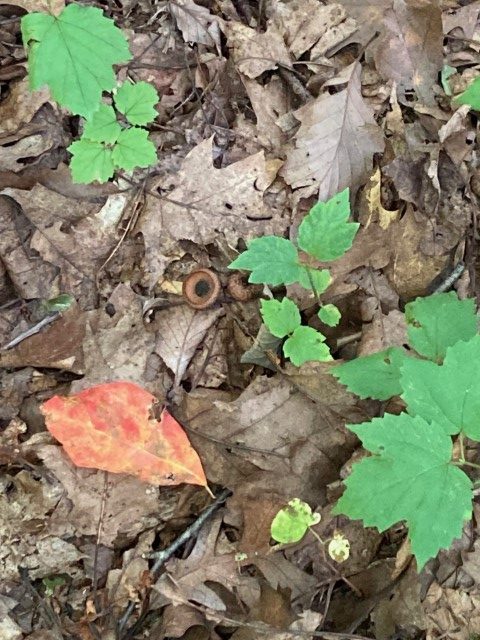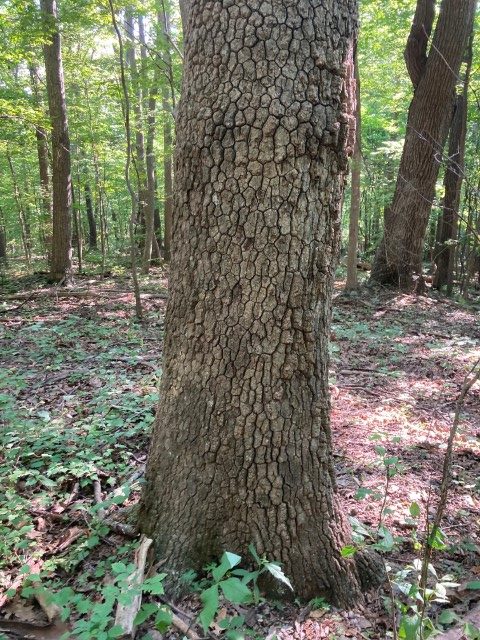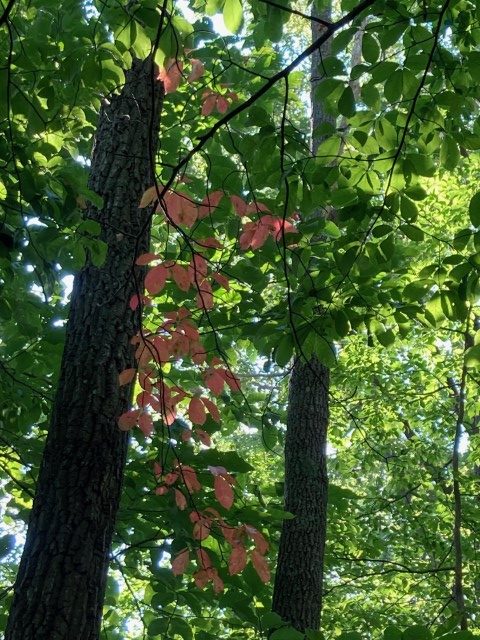Everyone knows that one person after the first cool day of late summer declares the fall season has arrived. Decorations are retrieved from storage and displayed. Clothes begin to shift towards fleece and flannel. Pumpkin begins to be used in cooking and flavoring for drinks. The natural embodiment of this pre-mature progression to fall is black gum. This Nine Minute Naturalist will delve into the nuances of the forests harbinger of fall, black gum.

Black gum, though not a common component of our forests, may be our most diverse and unique tree. It can grow in the wetlands of Virginia’s coast or it can grow on the poor soils of a mountain ridgeline. It is exclusively a subordinate tree yet is among the longest living hardwoods. The oldest known individual is 679 years old. Trees in the 450 to 550-year-old range are common. It has been known to reach 100 feet tall but usually stays around 30-40 feet tall. It blooms in late spring and is a mainstay for honeybees.
The fruit, a dark blue drupe, ripens in late summer and is vital for the health of pre-migratory songbirds. Black gum is not a desired lumber species due to its proclivity to develop heart rot. Combine the fact that loggers avoid targeting black gum with its extreme longevity makes this tree easy to find in the Wintergreen woods.
The bark is the best way to identify this tree. The bark forms thick blocky chunks that are unlike most species. One of the most unique features of black gum bark is that it varies wildly between specimens. Sometimes it is uniformly blocky and sometimes the depth of the bark varies with feet resembling the ridged bark of chestnut oak. Focus on the areas of hexagon blocks and identification will be easy.
The leaves are somewhat innocuous and do not stand out from an identification perspective. The leaf structure is simple, elliptical to ovate. Another identification trick is to look at how the tree branches. Most trees such as northern red oak will branch at 45 degrees finding the quickest way to the sun. Black gums branch at 90 degrees trying to catch any light finding its way through the canopy. The feature that makes black gum a worth Nine Minute Naturalist subject is its fall color.


Not only does black gum have some of the best fall color in the Blue Ridge but it is also the first to fall color. The reason it is in such a race to change color is unknown. Certain publications will claim it turns color at the moment its fruit is ripe. The most likely reason is a response to environmental stressors.
Low soil moisture in late summer in combination with the trees subordinate place in the canopy could be all the justification black gum needs to start the transformation from green to vibrant yellow, orange, red and purple colors. The reds and purples synonymous with black gum are a result of a pigment called anthocyanin. A scarlet red black gum tree amongst at sea of green in early fall is striking and justification for its place among the elite fall foliage of Wintergreen.
The best location to find the first indications of leaf change at Wintergreen is along the Hemlock Springs and Cedar Cliffs Main trails. This loop will take you past many black gums of various age and in different states of leaf change. Be warned that finding a black gum changing colors may trigger you or your hiking partner to begin decorating for fall way too early!
